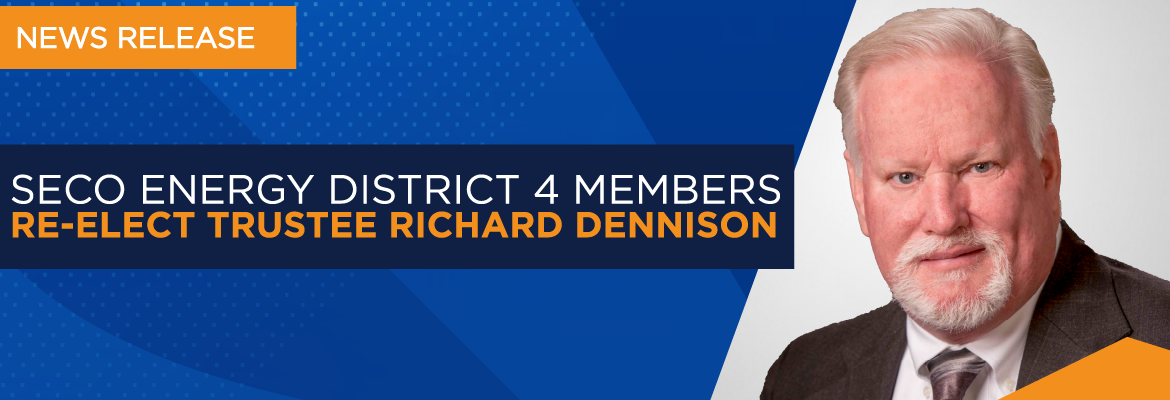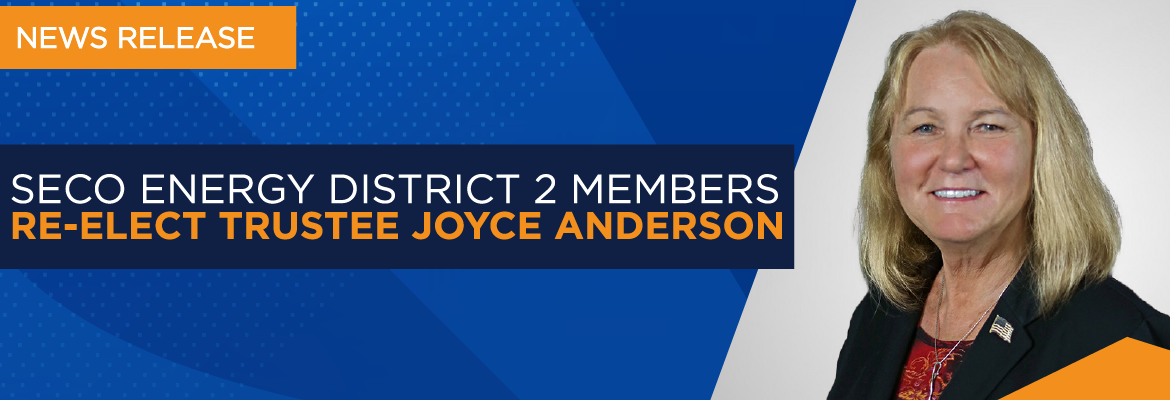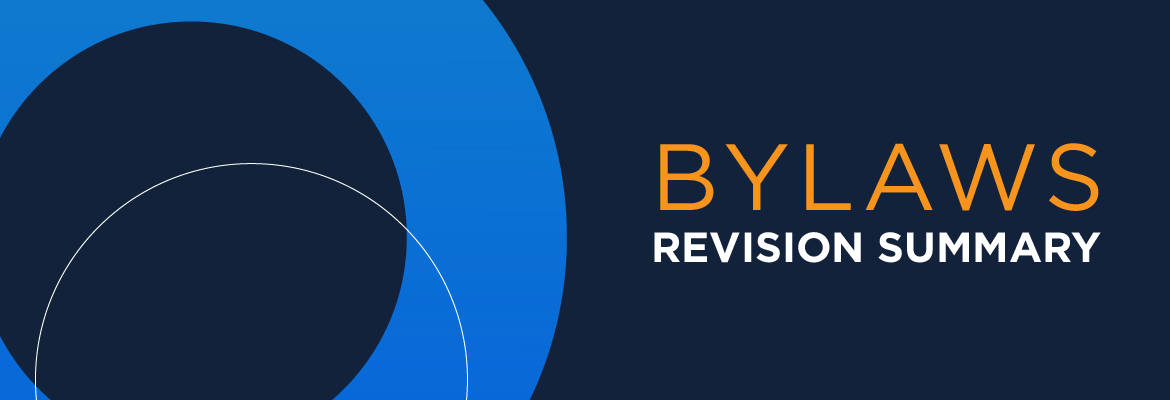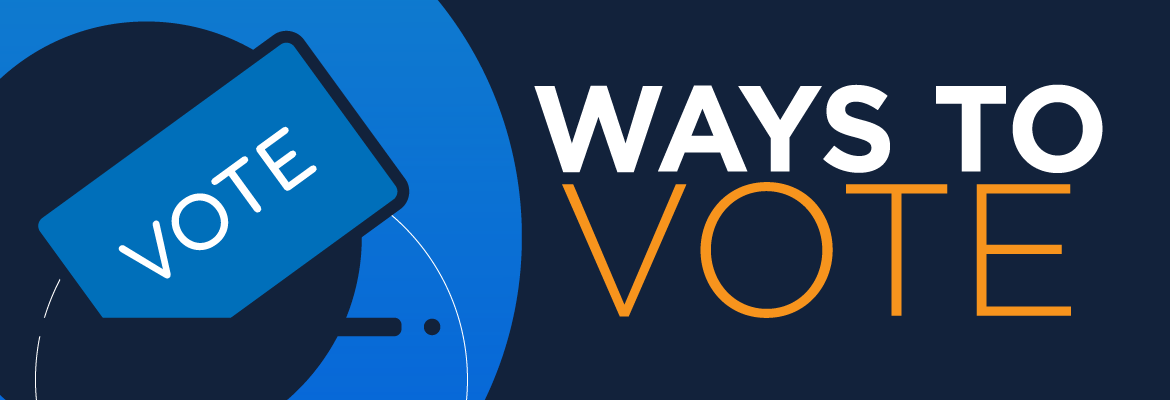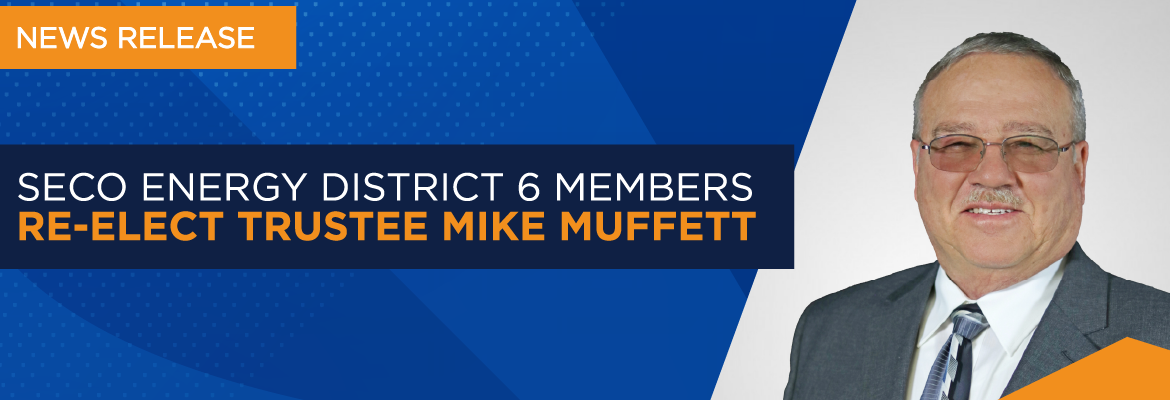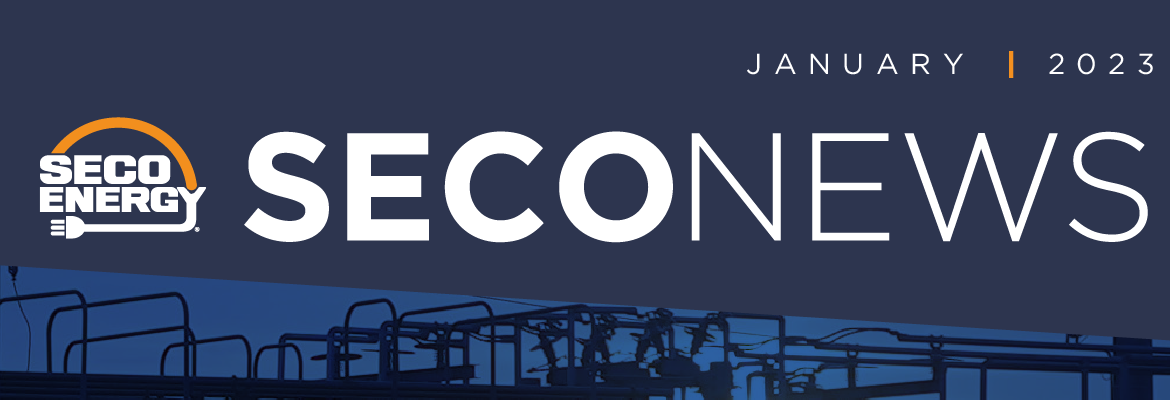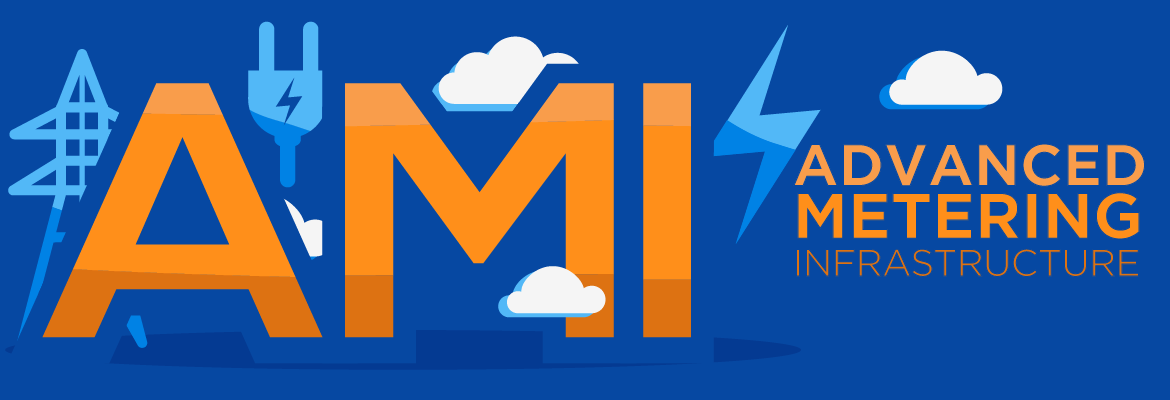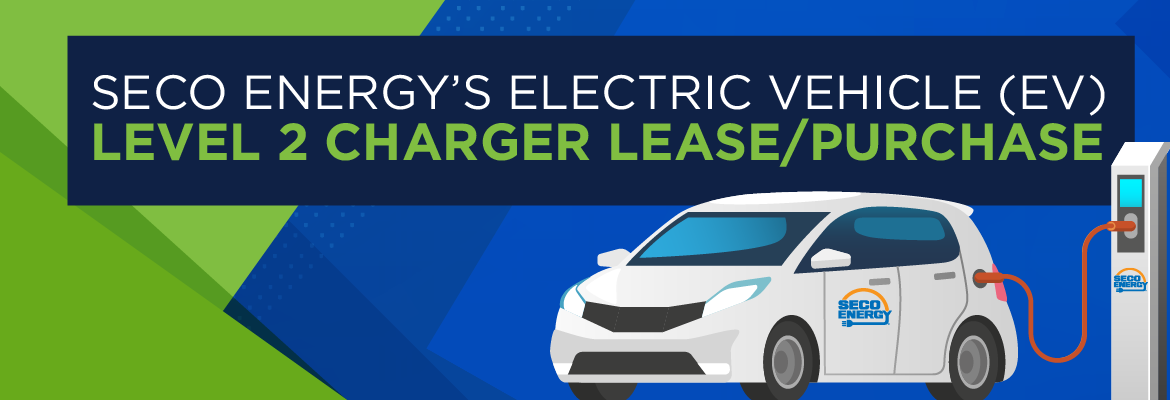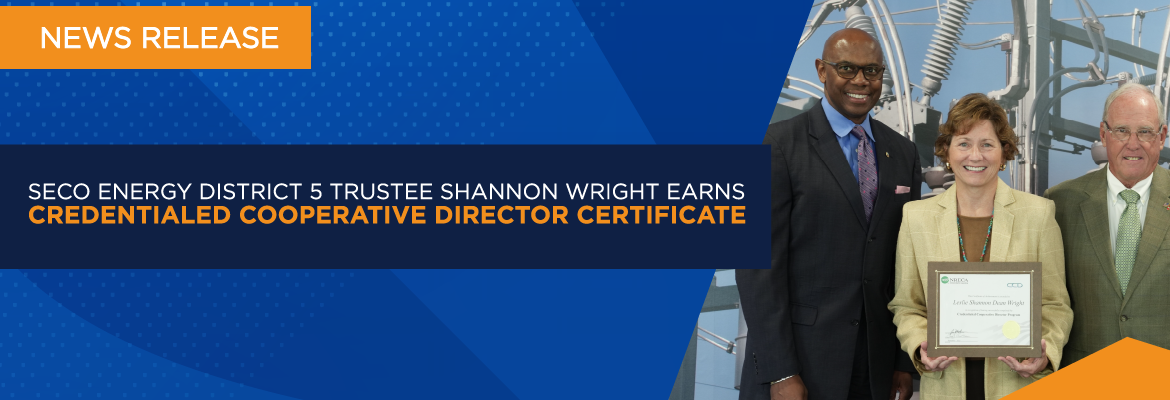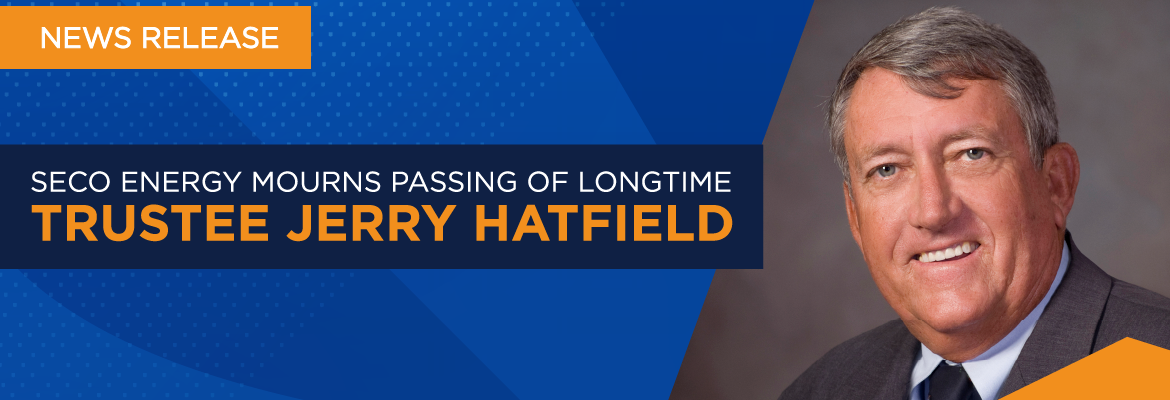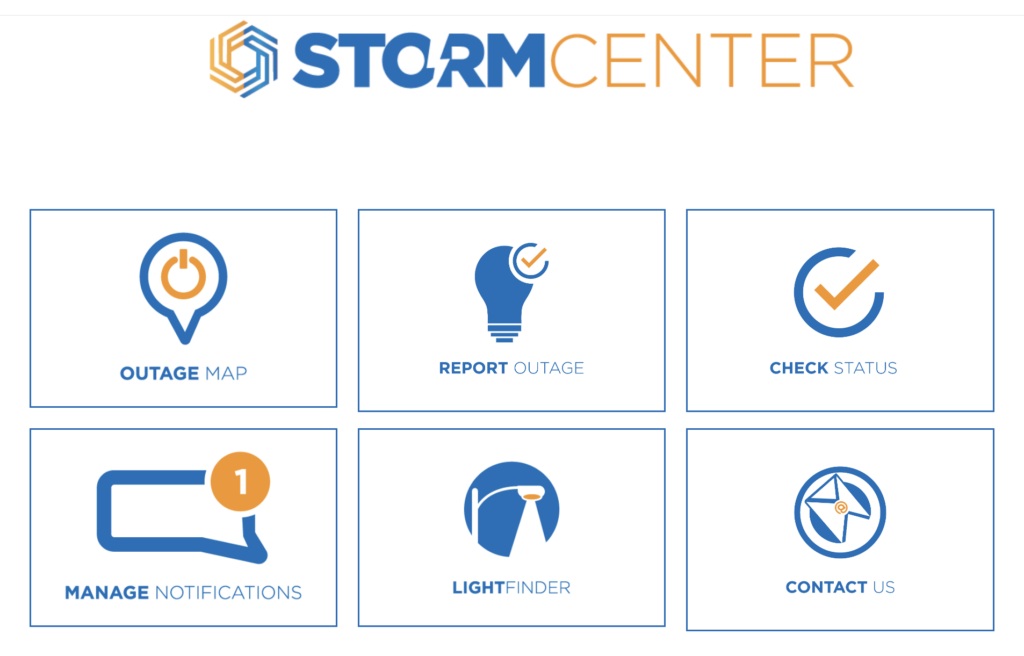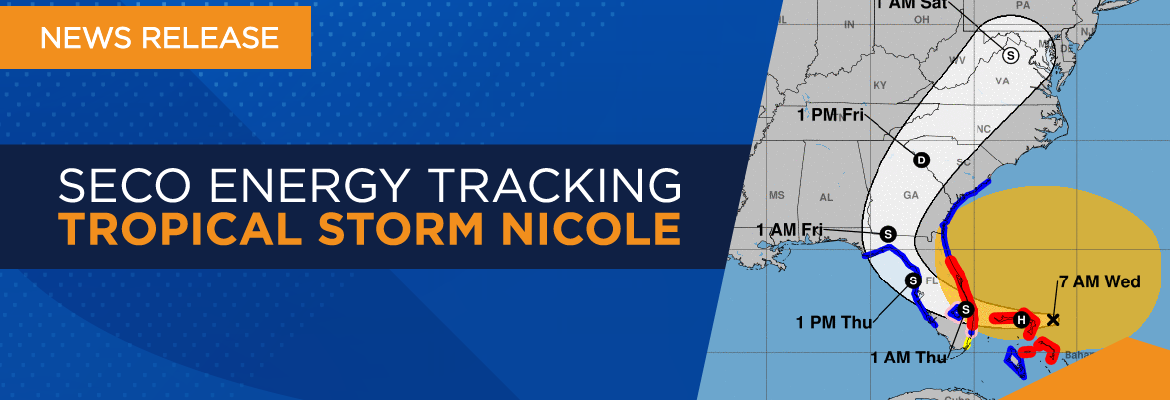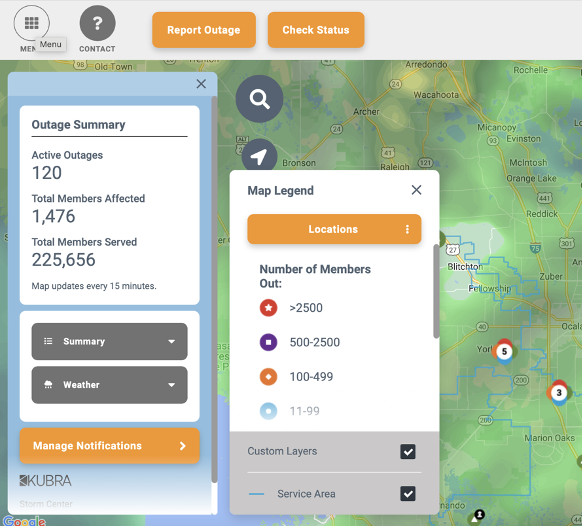Dear Members,
‘Tis the season for giving and sharing the magic of the holidays. I commend our SECO Energy employees who generously support our corporate giving efforts and other worthy charitable causes.
One cause close to many SECO Energy employees’ hearts is our annual United Way Employee Giving Campaign. Many of our employees pledged a portion of their 2023 earnings to local United Ways. Next year, United Ways across our Central Florida counties will benefit from these generous pledges.
SECO Energy employees pledged $38,843 to local United Ways through the employee-led 2023 United Way Pledge Drive. Our employees have been actively supporting United Way for almost 20 years. During that time, employees have pledged over $1,083,287 to support local families through the United Way.
Most of our employees live in Citrus, Lake, Marion and Sumter Counties, receiving the highest dollar amounts in donations. The 400+ SECO Energy employees choose the county and the program their donated dollars will benefit.
UNITED WAY PLEDGES BY COUNTY:
Lake and Sumter Counties: $15,929
Marion County: $14,257
Citrus County: $4,182
Other Counties $4,476
The total pledge for 2023 is $38,843
Not only do our employees assist local communities through United Way, but they also help fill Santa’s sleigh with donations for our corporate Marine Corps Reserve Toys for Tots donation drive. Starting in November, employees brought new, unwrapped toys for the drive. All toys donated are dispersed in the local area where they were collected.
Many of our members joined in the effort by dropping off toys at our Member Service Centers. Thank you for your generosity. Retired Marines and other volunteers picked up donations in early December to distribute to children in need in time for the holidays. Members who want to register to receive toys donated through Toys for Tots can visit ToysforTots.org > Request a Toy.
From the SECO Energy family to yours, we wish you Happy Holidays and a Happy New Year!
Sincerely,
Curtis Wynn
Chief Executive Officer

Electric Safety
Everyone who uses electricity should be aware of its risks and dangers. Over 51,000 American homes are damaged or destroyed by fire caused by electrical failures each year, and 500 lives are lost (Electrical Safety Foundation International).
Adults over 65 and young children are at the highest risk of injury or death from a home fire.
You should learn the basics of your home’s electrical system and how to prevent electrical fires. Outdated wiring is a common culprit of electrical fires. Flickering lights, tripped breakers, or a burning smell could indicate overloaded circuits. Hire an electrician to investigate. If the home’s wiring is outdated, the electrical outlets are as well. Outlets are as well. Outlets that are damaged, loose or warm to the touch must be repaired or replaced.
Home wiring and troubleshooting is a job best left to a professional. Contact a reputable electrician who is licensed, insured and adheres to local code requirements. Electricians can update breaker panels and add extra electrical outlets that will avoid circuit overload.
Electrical safety extends outside the home. Never touch utility equipment such as underground transformers or overhead power lines. Always consider power lines to be energized and dangerous. Stay away from downed lines and call 911 and SECO Energy to report immediately.
Teach children electrical safety as well. Never allow children to play on or near electrical equipment or climb a substation fence. Children should not climb trees near energized lines. Keep remote-control toys, hobby drones and kites away from overhead lines.
Learn more about electrical safety at SECOEnergy.com > Safety > Electrical Safety.
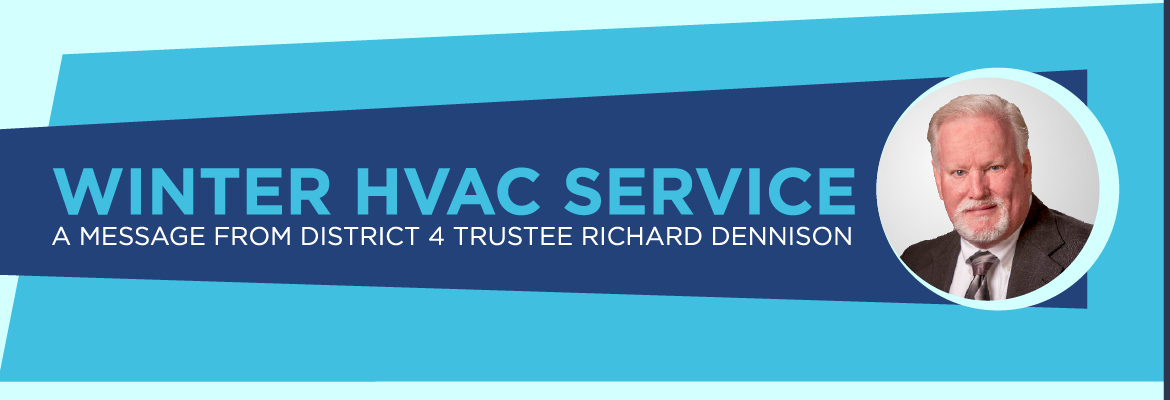
Winter HVAC Service – A Message from District 4 Trustee Richard Dennison
Your HVAC (heating, ventilation, and air conditioning) unit is likely the largest energy user in your home. Before winter’s cold temperatures arrive, schedule an HVAC service call to ensure your unit is operating efficiently.
The Old Farmer’s Almanac predicts winter 2022 – 2023 will be cold with above-normal rainfall. The forecast calls for temperatures 1 to 4 degrees below average, with the coldest temperatures in January.
Preventative maintenance and routine filter changes extend the life of your HVAC unit. A qualified technician will thoroughly inspect the unit and recommend maintenance or repairs. A well-working HVAC unit operates more efficiently and uses less energy.
Set a calendar reminder to change your unit’s air filter monthly or follow the manufacturer’s suggested filter change schedule.
For more ways to reduce energy usage, visit SECOEnergy.com > Energy Solutions and complete the Home Energy Assessment and Energy Estimator. The Home Energy Assessment is an online energy audit that provides energy efficiency advice tailored to your home’s features. The Energy Estimator calculates the energy used and associated costs for your home’s electricity users. Submit your answers with your email address to receive immediate low-cost energy-saving advice.

12 Ways to Pay
SECO Energy offers members 12 Ways to Pay their monthly energy bills. Most payment options are available with no convenience fee.
PAY ONLINE – Our account manager SmartHub allows you to view and pay your bill, enroll in bank draft or eBill and compare energy usage by month or year.
BANK DRAFT – Draft your monthly amount from a bank account of your choice – the ultimate in convenience. Enroll in bank draft with SmartHub.
IN PERSON – Five Member Service Centers open in Eustis, Groveland, Sumterville, Ocala and Inverness with walk-in, drive-thru facilities and kiosks.
BY PHONE – 1 (855) 938-3432, 24 hours a day, seven days a week. Accepts Visa, MasterCard, Discover, AMEX, debit card or electronic check.
PAY NOW – Instant payment using your account number and form of payment through SmartHub – no registration required.
BY MAIL – SECO Energy
PO Box 70997
Charlotte, NC 28272-0997
MYWAY PREPAY – Pay for energy before you use it. View daily usage and receive phone or text notifications.
FIDELITY EXPRESS – Locations accept cash, check or money orders. Not recommended for MyWay PrePay members. $1.50 processing fee.
MONEYGRAM – Available at many retail locations and for MyWay PrePay enrolled members. $1.50 processing fee.
WESTERN UNION – In-person payments received in real time. Max amount per transaction is $1,000. $1.50 processing fee.
BUDGET BILLING – Levels out bills by averaging most recent 12 months usage. Debit/credit balances accumulate based on seasonal usage.
VANILLADIRECT PAY – Pay with cash at thousands of locations. Barcode required via SmartHub. $1.50 processing fee.

Winners’ Circle – Generator
Congratulations to our three members who enrolled in SECO Energy’s Surge MitiGator Surge Protection program and won a generator!
SEPTEMBER – Jack Bonniwell from The Villages
OCTOBER – Barney Newbern from Leesburg
NOVEMBER – Kenneth Christensen from Clermont
The Surge MitiGator takes the bite out of damaging surges and spikes. Members can lease the protection for $5.95 per month plus tax and $25 installation fee or purchase for $349 to $399 plus tax and free installation. Learn more about the Surge MitiGator, visit SECOEnergy.com > Energy Solutions > Surge MitiGator and fill out our handy web form.

SECO Energy Foundation Enrollment Change – January 2023
SECO Energy’s Pennies from Heaven program transitions to the SECO Energy Foundation in January 2023.
The SECO Energy Foundation will expand community outreach and member bill payment assistance. The Foundation is funded by SECO Energy rounding enrolled members’ bills up to the nearest dollar and donating the pennies to the Foundation. The average donation per member whose bill is rounded up is $6 annually.
At year-end, all SECO members will be automatically enrolled in the SECO Energy Foundation unless they have proactively advised us over the last five months that they wish to unenroll. There are multiple ways (see below) to unenroll from the Foundation’s electric bill round-up program. Please update your SECO Energy Foundation enrollment status before December 31, 2022.
To update your SECO Energy Foundation enrollment status, visit SECOEnergy.com > Contact > SECO Energy Foundation. Send an email to CustomerService@SECOEnergy.com, call (352) 793-3801 or write to SECO Energy, Attn: Corp Comm, P.O. Box 301, Sumterville, FL 33585 by December 31, 2022.
Read the full December 2022 SECO News online.



